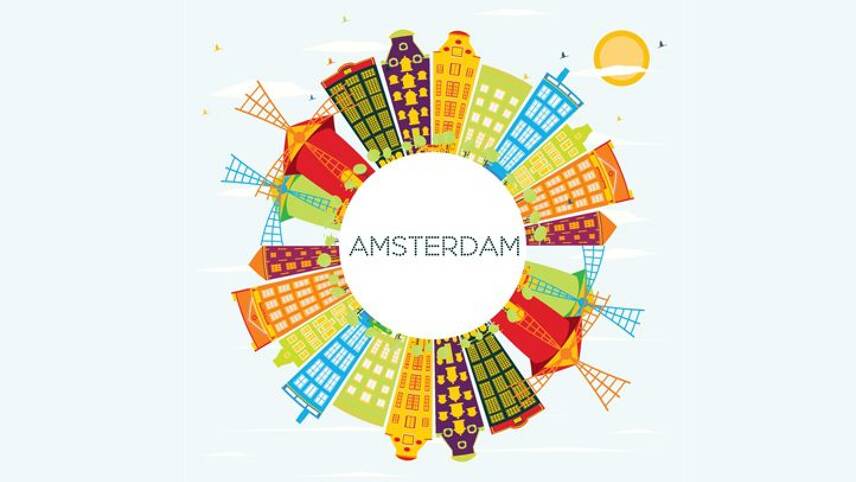Register for free and continue reading
Join our growing army of changemakers and get unlimited access to our premium content

Amsterdam is already an internationally acknowledged leader in the field of circular business activity (which means no resources are wasted). It is the ambition of the Board to make the region fully circular by 2050. True to its remit of focusing on collaboration, innovation and growth, the Board invited me to talk with them about a key circular economy issue; how to close the loop for used materials and resources. It wants to implement a large-scale tool that enables market participants to redeploy old products, used equipment, production rest streams and other types of waste in a cost effective and convenient way.
The Board’s idea is use a technology-based, digital platform model – essentially an online marketplace – to make this circular economy vision a reality. Rather than simply funding the development of such a platform, the Board has decided to get the market to create a solution. Companies can submit their proposed solutions from October to December: the winner will be announced in February.
What is novel about this approach is its emphasis on the private sector’s commitment. While the winner of the competition will receive €750,000, it is a hard condition that this funding must be matched on a 1:2 basis – the victor must be prepared to put up twice the Board’s grant. Should a single entity win, it will have to prove it has €1.5 million available before it receives anything from the Board.
Will this plan work? Certainly, there are a growing number of competitions held to find technological solutions to problems. Since 2015, Tesla and Space X boss Elon Musk has challenged the world to prove his Hyperloop transport solution can work. Competitions have obvious merits. There is the potential for a leftfield idea to emerge that might otherwise not come to light.
However, the notion of using a contest to stimulate innovation is also potentially problematic. In this instance, there’s no obvious business case for a circular economy waste marketplace. Consequently, it may be hard to find private sector companies (or financiers) willing to commit to the project: for many, the €750,000 grant would be a prerequisite before they invested their own resources. On the other hand, if there was a compelling business case, would a grant really be necessary? It’s a chicken-and-egg situation of the type that often comes up when the circular economy is being discussed.
Of course, it may be the case that rather than planting the seed of an entirely new business concept, the Board’s competition prompts existing platform providers to expand their concept to include providers and users of waste streams. Luxembourg-based sharing economy platform FLOOW2 enables businesses to share assets, including equipment, services or knowledge, with other businesses, while Globechain is a London-based online platform that enables businesses, charities and people to reuse unwanted items. Both companies could be a good fit for the Amsterdam Economic Board’s scheme.
The setup of this competition highlights a few additional issues. Firstly, no-one, governmental bodies included, is willing to simply throw money around: there is a clear reluctance to put up funding without a realistic prospect of an idea reaching fruition. In this case, the requirement for funding on a 1:2 basis will ensure that only the most financially-robust solutions are proposed.
Secondly, the use of platforms, which create value by facilitating exchanges between two or more interdependent groups – usually consumers and producers – is central to almost every new business concept. Connecting companies and individuals that don’t currently talk to each other or aren’t linked by a supply chain is one of the most important ideas of our time. The use of technology makes this concept (and the scale it requires) possible.
Finally, the financial models underpinning new concepts are continuing to evolve. Bricks-and-mortar businesses have been financed on the strength of their premises and inventory for centuries – we’re still working hard to finding a similarly cast-iron financing structure for companies in the circular economy. One possible model is blended finance, where grants, debt and equity financing are aligned to facilitate projects that might otherwise struggle to secure support.
ING is actively engaged in the topic of blended finance: in November 2016 it launched the Sustainable Finance Collective (SFC) Asia with partners including the Dutch development Bank FMO and the UNDP-UN Social Impact Fund. The SFC Asia collaborative platform, which also involves technical and environmental experts, will accelerate access to funding for projects stimulating a circular economy, sustainable energy projects and those making a positive social impact in Asia. It could yet be a risk-sharing model that finds a useful application elsewhere in the world.
Gerald Naber is vice president of sustainable finance at ING




Please login or Register to leave a comment.